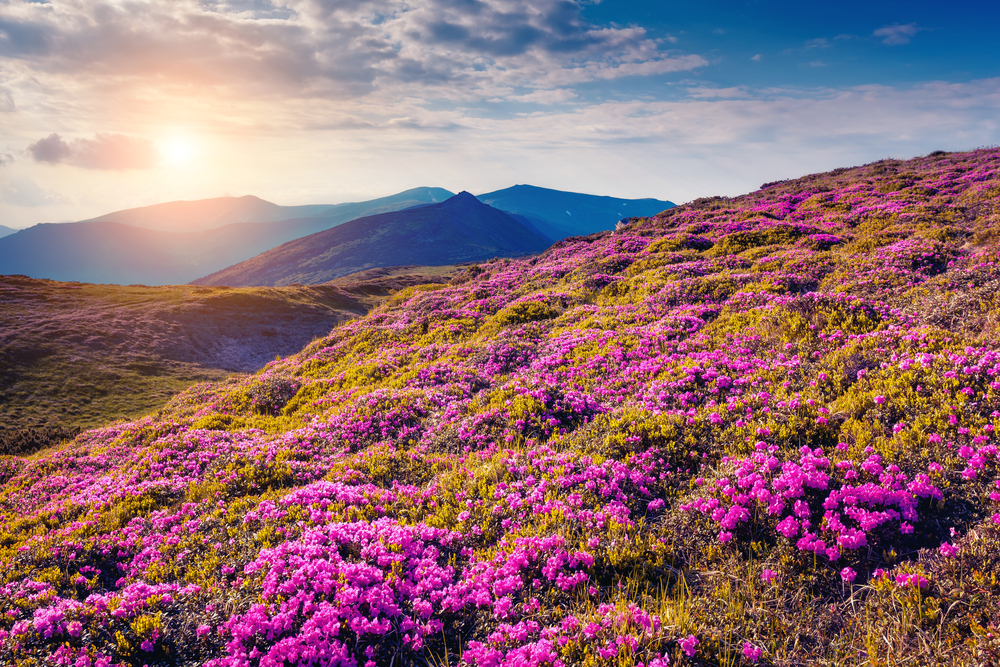Carpathian Overview
Carpathian National Park, known locally as Карпатський національний природний парк, is one of Ukraine’s most stunning protected areas, covering approximately 240 square miles (621 square kilometers).
Located in the heart of the Carpathian Mountains in western Ukraine, the park features a striking landscape of rugged peaks, deep valleys, and dense forests. Hoverla, the highest mountain in Ukraine at 6,762 feet (2,061 meters), lies within the park’s boundaries. Rivers like the Prut and Chorna Tysa carve through the landscape, forming breathtaking waterfalls, such as Probiy Waterfall near Yaremche, which is a popular attraction.
The park’s terrain is largely shaped by glacial and river erosion, creating dramatic gorges and rolling hills covered in thick beech, spruce, and fir forests. In spring and summer, the meadows burst into color with wildflowers, while autumn transforms the landscape into a golden spectacle of changing leaves.
The park is a sanctuary for diverse wildlife, including some of Europe’s most elusive species. The Carpathian brown bear, gray wolf, Eurasian lynx, and red deer roam its forests, while smaller mammals like the European pine marten and wild boar are also commonly found.
The birdlife is equally impressive, with golden eagles soaring above the mountain ridges and black storks nesting in remote wetlands. The area is also home to the Ural owl and the capercaillie, a large woodland grouse known for its dramatic courtship display. Streams and rivers support populations of trout and other freshwater fish, adding to the rich biodiversity of the park.
Carpathian National Park is well known for its cultural and historical significance, with centuries-old Hutsul traditions still practiced in local villages. The Hutsuls, an ethnic group native to the Carpathian region, maintain a rich heritage of music, wood carving, and unique architecture, which can be seen in the traditional wooden churches scattered throughout the area.
Visitors often explore the park’s scenic trails, which range from easy walks through lush valleys to challenging climbs up steep mountain slopes. The ascent to Hoverla is one of the most popular routes, rewarding hikers with panoramic views of the Carpathian range. In the winter months, the park transforms into a haven for snow sports, with nearby ski resorts offering opportunities for skiing and snowboarding.
Conservation efforts in Carpathian National Park focus on protecting its fragile ecosystems from deforestation, illegal hunting, and the impacts of tourism. Strict regulations have helped preserve the park’s old-growth forests, which serve as vital habitats for many rare species.
However, climate change and human encroachment remain ongoing challenges. Despite these threats, the park remains a model for conservation in Eastern Europe, with local and international organizations working to ensure the sustainability of its natural resources.
Ecotourism initiatives, such as guided wildlife tours and educational programs, aim to promote awareness and appreciation of the park’s unique environment while minimizing human impact.










































































